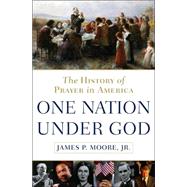
. teaches at the McDonough School of Business at Georgetown University. A former U.S. Assistant Secretary of Commerce, he sits on a number of corporate and nonprofit boards and has written and lectured widely on American prayer and spirituality as well as subjects related to the world of business and corporate ethics. He resides in Washington, D.C.
| Prologue | ix | ||||
| Introduction | xv | ||||
|
1 | (28) | |||
|
29 | (22) | |||
|
51 | (29) | |||
|
80 | (33) | |||
|
113 | (28) | |||
|
141 | (25) | |||
|
166 | (23) | |||
|
189 | (27) | |||
|
216 | (25) | |||
| 10 The Idealists: 1900-1920 | 241 | (27) | |||
| 11 The Innovators: 1920-1935 | 268 | (32) | |||
| 12 The Defenders: 1935-1945 | 300 | (23) | |||
| 13 The Rebuilders: 1945-1960 | 323 | (34) | |||
| 14 The New Pioneers: 1960-1975 | 357 | (45) | |||
| 15 The Contemporaries: 1975—the New Millennium | 402 | (39) | |||
| 16 The Innocents: September 11, 2001, and Beyond | 441 | (28) | |||
| Notes | 469 | (35) | |||
| Index | 504 |
The New copy of this book will include any supplemental materials advertised. Please check the title of the book to determine if it should include any access cards, study guides, lab manuals, CDs, etc.
The Used, Rental and eBook copies of this book are not guaranteed to include any supplemental materials. Typically, only the book itself is included. This is true even if the title states it includes any access cards, study guides, lab manuals, CDs, etc.
Excerpted from One Nation under God: The History of Prayer in America by James P. Moore
All rights reserved by the original copyright owners. Excerpts are provided for display purposes only and may not be reproduced, reprinted or distributed without the written permission of the publisher.